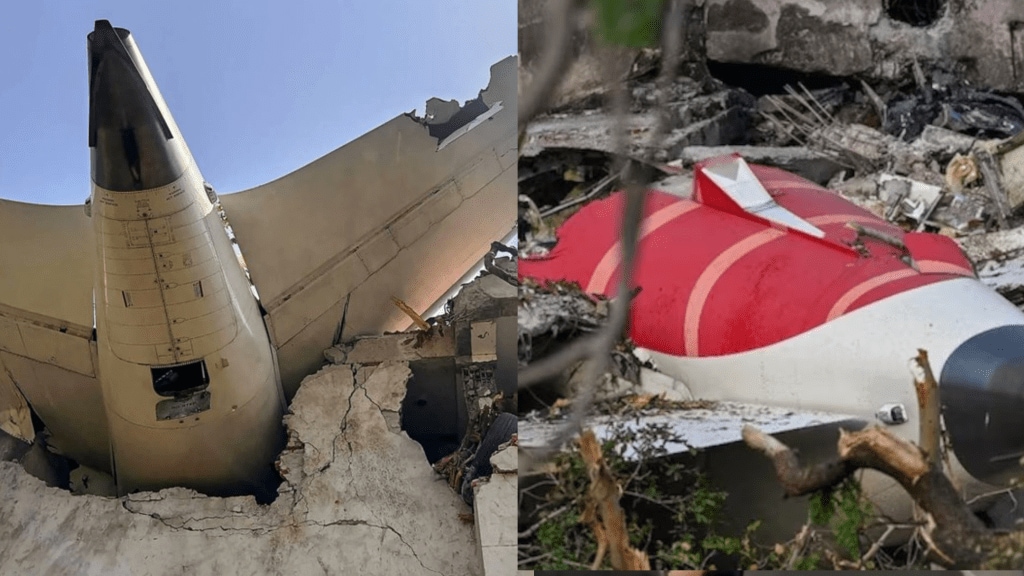Ahmedabad plane crash: Air India flight AI 171 showed no worrying signs before it flew from runway 23 of the Ahmedabad Airport. It took-off like any other aircraft, seemed to have enough engine power and was functioning normally. However, both engines of the aircraft failed together mid-air, and it crashed moments later, according to an investigative report by The New York Times.
‘Both engines failed together’
A Wall Street Journal report had earlier hinted at the possible cause of the crash – dual engine failure – but this is the first time that it can be said with greater certainty that both engines failed at the same time.
This development builds on earlier investigations, which revealed that the landing gear did not retract and that the aircraft’s emergency power system generator, the Ram Air Turbine (RAT), was either automatically deployed or manually activated by the pilot. The RAT provides enough power to assist a plane in landing during emergency situations.
Typically, when one engine fails, the aircraft swerves slightly to one side before the pilot or the plane’s computer system corrects it. However, this is not visible in any of the videos recorded moments before the crash. Since the plane stayed on course, it suggests that both engines lost thrust at the same time, the NYT further reported.
The pilot, too, in his mayday call to ATC, said that the flight is “losing thrust” and that he is “unable to lift” it, which further backs this assessment.
NYT also spoke to a former accident investigator, who suggested that the engines likely failed at the same moment.
“You don’t see any kind of indication of asymmetric thrust,” Jeff Guzzetti, a former employee of the Federal Aviation Administration, was quoted by NYT as saying.
Guzzetti added, “You don’t see yawing, you don’t see rudder deflection, you don’t see smoke, or puffs of flame from either engine. That all adds up to me to be a symmetrical loss of power.”
What could have caused dual engine failure?
Although this is a highly unusual scenario, the likelihood of it cannot be ruled out. An earlier WSJ report citing investigators mentioned that presently the engines are more “efficient” and “reliable”, a dual engine failure is “rare”.
“In commercial aviation, a dual-engine failure is extremely rare. Our engines today are more efficient and reliable than ever,” WSJ quoted US-based aerospace safety consultant, Anthony Brickhouse, as saying.
NYT reported that the dual engine failure could have been caused by the contamination of the fuel source into both engines, or by an incorrect input of flight parameters before takeoff.
Mary Schiavo, an aviation attorney with Motley Rice, told The Sunday Guardian that the crash could have been caused by a known software-triggered engine malfunction.
Air India plane crash: What else do we know?
The flight tracking data has gaps, which suggests the aircraft might have backtracked on the runway, meaning it taxied backwards along it, to use the full length for takeoff. CCTV footage supports this theory. The Boeing 787 Dreamliner used the entire 3.5 km runway before taking-off – which is unusual. Seconds later, it started descending at a speed of -475 per minute before crashing.
Photos from the wreckage show the right wing slats in an extended position, indicating they were deployed to increase surface area and generate more lift. The outlet reported that the burn marks on the slats suggest that they were extended before impact, and shadows on the leading edge of the plane’s right wing during descents, as seen in a video, support this theory.
Although the shadow is visible in another video, which was recorded from the nearby rooftop, experts told NYT that they cannot confirm this definitively due to the video’s quality.
The NYT report also mentioned a failure in the retraction of the landing gear. Pilots usually retract the landing gear -starting with the front wheel – after takeoff. The tilted position of the wheels suggests that the retraction was initiated but failed, possibly due to insufficient power.
India’s Aircraft Accident Investigation Bureau (AAIB), which is independently conducting the investigation into the crash, used a flight simulator to recreate the flight using the same conditions, such as landing gear being down and wing flaps pulled in. Initial investigations found that these settings alone didn’t lead to a crash, Bloomberg reported citing people involved in the investigation.
The flight simulation uses computer models and mathematical data to copy the physics of flying, like how an aircraft turns, climbs, lands, or, in Air India’s case, crashes.
The data from the black box was retrieved and is being assessed. The AAIB lab is doing an analysis of CVR and FDR data. It holds key evidence as to what led to the crash that claimed the lives of 241 passengers. One passenger miraculously survived the crash.

